Are you confused what product is best for you?! We got your back! Click on our buying guides to get helpful tips about your next product purchase.

Diamonds are available in a full-spectrum of colors, clarity, and cuts. Color is very important when choosing a Diamond. The more clear and colorless the Diamond, the higher it is graded on the GIA scale.
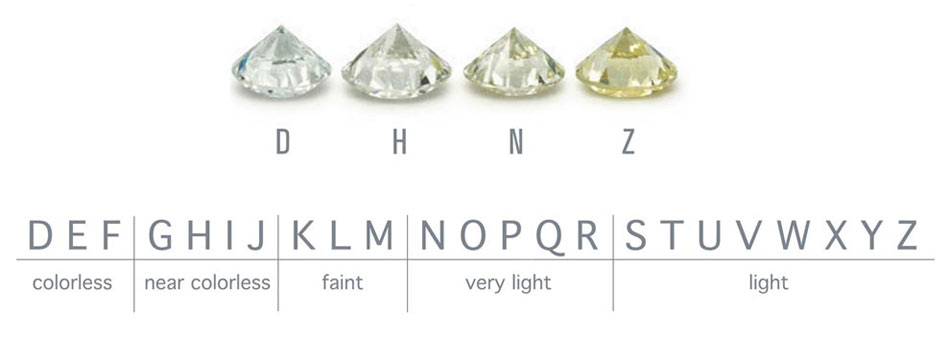
Clear and colorless Diamonds often appear perfect, but each has flaws or inclusions. These can be tiny scratches or pieces of minerals. Less flaws, the better when it comes to the value of a Diamond. Finally, the cut significantly affects a Diamond's proportions, finish and brilliance. The sparkling radiance of a shoddy cut Diamond will have reduced even if it is flawless.

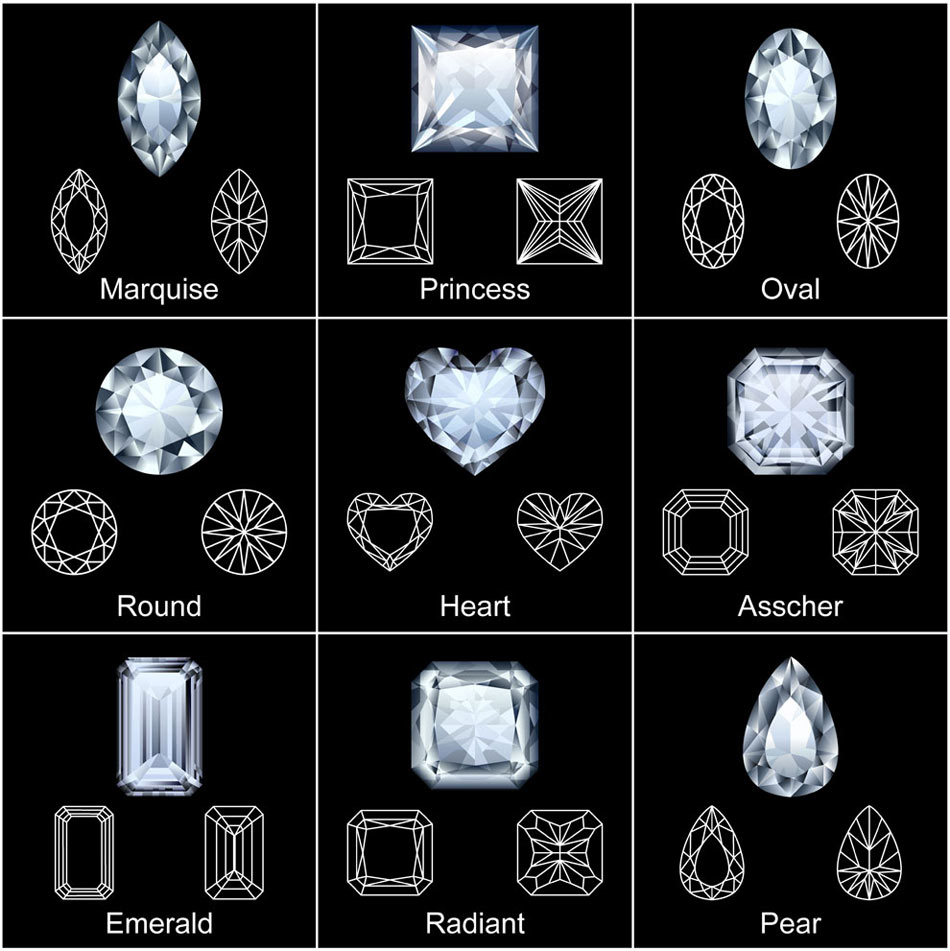

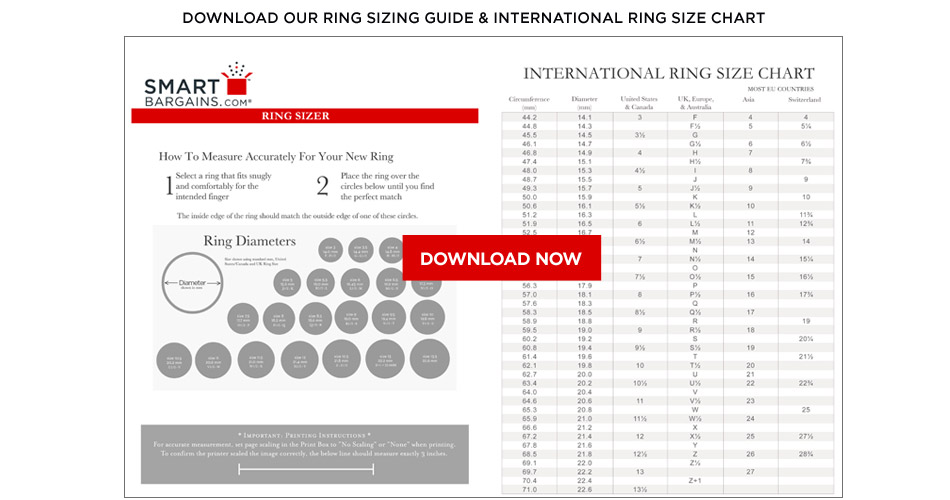

Whatever precious metal you select for your fine jewelry purchase, please remember the metal is only one component of the fine jewelry. Expert craftsmanship and design are other essential elements for fine jewelry's everlasting value and long-lasting good use.
Platinum the pre-eminent metal in premium jewelry is also the rarest and most costly. Platinum, a hypoallergenic metal, has a natural pristine white patina that will never fade, change color or tarnish. The metal's natural glowing luster accentuates the sparkle and brilliance of a diamond and is the metal of choice for engagement rings and wedding bands. Many fine jeweler a use platinum setting to enhance the luster and gleam of a diamond.
Gold the quintessential symbol of luxury offers a rich legacy in the craftsmanship of fine jewelry. Although gold
is exceptionally strong, it's also the most malleable of all precious metals. Pure gold is too soft for the demands
of everyday use and is alloyed with a mixture of other metals: silver, copper, zinc and nickel for durability
and strength. Both 18K and 14K gold offer the glowing characteristics of the metal, along with sturdiness.
Gold comes in three tones: Yellow, White and Rose. While natural gold has a yellow hue, a blend of copper,
silver and pure gold give this metal its glowing yellow details. White gold is created blending white metal alloys
with pure gold. The warm pink elements of Rose gold is achieved when copper and pure gold are blended together.
Sterling Silver is not only one of the most popular precious metals featured in fine jewelry it's an affordable alternative to other white metals platinum, palladium and white gold. A special rhodium plating is often used on sterling silver jewelry to protect the finish.
Palladium a natural white metal is part of the Platinum family and has many characteristics similar to Platinum. Palladium is also hypoallergenic, will not tarnish and remains white forever. Palladium is also extremely durable and does not require other metal alloys or plating for protection. Palladium is more affordable and lighter in weight than Platinum.
Rhodium, a member of the Platinum family is a hard, shiny metal. It is often used to plate white gold, preserving its luster and finish. Rhodium is also used with sterling silver to prevent discoloration of the metal and protect its shine as well.
Tungsten Carbide is non-precious metal that is extraordinarily durable, sturdier than stainless steel and capable of lasting a lifetime. It is comparable in hardness to a sapphire or ruby. What's more tungsten carbide's solidity protects it from scratches and abrasions.


Pearls come in a wide spectrum of colors, shapes and sizes. A Pearls' attributes depends largely on the mollusk that creates them. Most Pearls are produces by marine oysters, but mussels that live in freshwater lakes and rivers produce their own beautiful variety of Pearl. Freshwater Pearls are prized for their wide variety of colors with colors ranging from classic white to pink, lavender, orange and other pastel is determined in the same way as it would be for other "Precious" gems. The valuation factors include size, shape, color, and quality of surface, orient and luster. The ideal Pearl is perfectly round with an intense inner shine and smooth surface.
Care Tips: Wipe your Pearls with a damp cloth to remove perspiration, oil or any other residue. For regular cleaning, wipe with a damp cloth. Dry completely with a soft cloth. Avoid heat, hot water, steamers or ultrasonic cleaners along with cosmetics and hair sprays. Don't soak in water. For more info click on Jewelry Clean and Care

Rubies are extremely rare and have long been coveted for their stunning beauty and brilliance. The color of ruby stones from brownish to dark red. Perfect ruby gemstones are rare, since most have various inclusions due to their crystallization process. These inclusions do not affect quality of the ruby. Prices of rubies are primarily determined by color. The brightest and most valuable "red" called pigeon blood-red, commands a large premium over other rubies of similar quality. After color follows clarity similar to Diamonds, a clear stone will command a premium, but a ruby without any needle-like inclusions may indicate that the stone has been treated. Cut and carat (weight) are also an important factor in determining value. On the Moh's scale, the ruby has a hardness of 9, ranging close to the solidity of a Diamond. Care Tips: Rubies are easy to care for since they are so hard and durable. However, you should not wear a ruby if you are doing rough work or using harsh chemicals. For more info see Jewelry clean and care
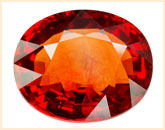
July Birthstone
View our Ruby Collection>Emeralds, like all colored gemstones, are graded using four basic parameters-the four Cs if Connoisseurship: Color,
Cut, Clarity and Crystal. With a hardness of 7-8 on the Moh's scale, Emeralds are pretty resistant to scratches.
However, Emeralds are porous and thus considered to be a brittle stone. Therefore, they are given a protective
coating of oils or resin for protection during the creative process.
Care Tips: We don't recommend extreme heat, hot water, steamers or ultrasonic cleaners. Don't expose to
harsh cleaning solutions. It is very important to never clean these stones in an ultrasonic bath and to remove
Emerald jewelry when using any type of household cleaner. You should only use a soft cloth and cool water to clean
your Emerald. See Jewelry clean and care
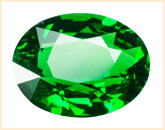
May Birthstone
View our Emerald Collection>The colors of a Sapphire range from red, blue, yellow, pink, and even green. However, it is mostly commonly known as blue gem, which is why the Greek word Sapphire is �Blue Stone'. This stone is crystallized with intense pressure and heat, deep in the ground. They are valued according to their size, color, and transparency. Red Sapphires are so unique that they're in a class of their own. They are now referred to as rabies. Sapphires originate from Sri Lanka. Sapphire range a 9 on the Moh's scale, (a Diamond ranking a 10), making the Sapphire of the hardest minerals on earth. Care tips: See Jewelry clean and care
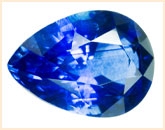
September Birthstone
View our Sapphire Collection>Amethyst is a purple variety with color variations from pale pinkish violet to deep purple. A particular stone
may exhibit one or both secondary hues of red and blue. The ideal grade is called "Deep Siberian" and has a primary
purple hue of around 75-80%, with 15-20% blue and red secondary hues. The Amethyst ranks a 7 on Moh's scale. The
most sought after Amethyst colors are deeper shades of purple.
Care Tips: General jewelry cleaning can be used when caring for your Amethyst jewelry. However, it should
be noted that the color of an Amethyst can be affected by the extreme heat. See Jewelry clean and care
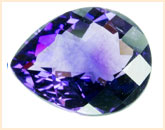
February Birthstone
View our Amethyst Collection>Onyx is commonly viewed as a black gemstone. However, the colors of its bands range from white to almost every
spectrum color. Onyx is a beautiful type of quartz and is available in many shapes and sizes and is fairly strong.
It measures 7.0 on Moh's hardness scale.
Care Tips: Normal jewelry cleaning practices will keep your Onyx jewelry looking great for years to come.
See Jewelry clean and care.
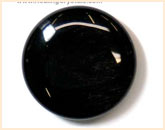
Citrine gemstones have grown in popularity over the past decades. The name is derived from the Latin word Citrine
which means "Yellow". The stone is a beautiful yellow color with hues and shades that vary from a light pale yellow
to a yellowish orange, and some also have a red or brown tinge. Natural Citrines are so rare. Most Citrines you
see today all started out as Amethysts superheated to the color you see. Hence. The Citrine is also part of the
quartz family. With a harness of 7 on the Moh's scale, the Citrine is a very tough gem.
Care Tips: It should be noted that Citrines should be kept away from prolonged exposure to strong light
or heat. If you keep this tip in your mind your Citrine will one day make a great family heirloom. See Jewelry clean and care.
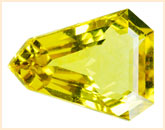
November Birthstone
View our Citrine Collection>Aquamarine is a stunning gemstone that is the color of the sea with bluish green hues. Aquamarine receives its spectacular blue color from the iron present during its formation. The translucent color of Aquamarine makes it easier to see inclusions that in other gemstones. This stone has been coveted for thousands of years. The hardness is 7-8 on the Moh's scale. Which helps the Aquamarine with stand the rigors of daily wear. Because of this, Aquamarine should always be a greatest possible transparency. The more intense the color of this stone the more valuable it is. Care Tips: See Jewelry clean and care.
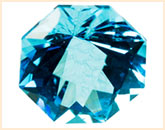
March Birthstone
View our Aquamarine Collection>Coral is not a mineral or gemstone. It is actually created by living organisms in the sea. It comes in varieties
of colors including pale pink, salmon, red, white and black. Salmon or pale pink are perhaps the most common colors
associated with Coral. However, red Coral is the most rare and valuable and is sometimes called fire Coral. Coral
stones be cut into a full range of shapes and sizes.
Care Tips: Wipe gently with a damp cloth and clean. Dry with a soft, clean, absorbent cloth. Leave out
on a towel for an extended period of time to ensure it's completely dry. Don't use hot water, a steamer, or an
ultrasonic cleaner. Don't soak in water or expose to cleaning agents or chemicals cleaning agents or chemicals.
See Jewelry clean and care.
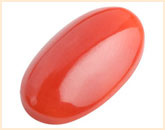
Turquoise has been known since at least 6000 BC and it continues to be very popular stone. Turquoise is known for
its beautiful hue of blue with the finest color usually being sky blue. However is also comes with some green
or greenish gray in it. It has a maximum harness of just under 6 on the Moh's scale.
Care Tips: Wipe gently with a damp cloth. Dry thoroughly with a soft cloth. Avoid hot water, soaking, chemicals.
Steamers or ultrasonic cleansers. See Jewelry clean and care.
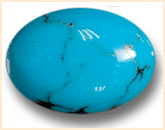
Garnet stone come in a wide variety of colors including red, orange, yellow, green, purple, black, pink and colorless. Garnets are typically known for being deep and warm red. They also come in a full-range of cuts. Garnets are found all over the world; however the highest quality stones come from east Africa. It has a structural hardness of 7 to 7.5 on the Moh's scale, which makes it a sturdy and resistant gem for everyday wear. Care Tips: Garnets are easy to care for. However, it's important to note that any hard impact can shatter the stone. See Jewelry clean and care.
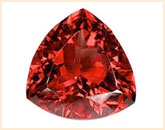
January Birthstone
View our Garnet Collection>Jade is a very popular stone that comes in many colors. The most popular is green, which tends to be an intense
and rich green. However, Jade can also come in other colors such as orange, yellow, gray and white. Jade measures
between 6.0 and 7.0 on the Moh's scale.
Care Tips: Wipe gently with a damp cloth. Dry thoroughly with a soft cloth. Avoid Hot water. Chemicals,
steamers and ultrasonic cleaners. Don't soak. See Jewelry clean and care.
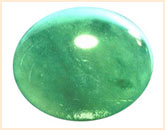
Peridot is one of the few gemstones that occur only in one color, an olive green. In fact. Its only gemstone that
comes in a greenish tint. The intensity and tint of the green, however, depends on how much iron is contained
in the crystal structure, so the color of individual Peridot gems can vary from yellow to olive- to brownish-green.
The most valued color is a dark olive-green. Peridot gems are usually cut in facets with a round, octagonal, or
round shape. The Peridot is one of the only gemstones that only comes in a greenish tint. It is the amount of
iron in the stone that amount for r this color. The Peridot tends ranks a 6.5-7.0 on the Moh's scale.
Care Tips: We recommend keeping your Peridot sway from any chemicals such a hairspray and saltwater. See
Jewelry clean and care.
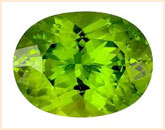
August Birthstone
View our Peridot Collection>No two Tourmalines are identical. They are all unique in color, clarity, and transparency. They come in all shapes
and sizes and range from red to green to blue to yellow. For this reason they are referred to as the rainbow gemstone.
The Tourmaline has a hardness of 7.0-7.5 on the Moh's scale.
Care Tips: We recommend keeping your Tourmaline away from any chemicals such as Hair spray, and even saltwater.
We suggest cleaning your Tourmaline with a delicate jewelry cleanser. See Jewelry clean and care.
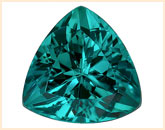

Limit exposure to the following factors.
Through our daily grooming rituals, we're exposed to various chemicals that may not harm us but could be harmful to our jewelry commonly found in hairspray, mousse, body lotion. Moisturizer, perfume, makeup, shaving cream, and soap, they can leave behind a residue and create a dull film that's difficult to remove. To prevent buildup, remove all jewelry before bathing and grooming.
Take off all jewelry before performing any kind of household chore or project. Harsh abrasive cleaners and chlorine can cause hard-to-remove buildup and dull scratches. Also remove jewelry when working with power tools. Chains, rings and earrings can easily get caught, resulting in serious injury. Follow all instructions when using such tools.
Although we use water to clean much of our jewelry, you should thoroughly dry our piece after exposure to water, especially before storing in an enclosed space. Moisture fosters tarnish on silver and can weaken springs and clasps. Certain custom/fashion jewelry and gemstones should never be soaked in water or worn when bathing.
It's best to keep jewelry away from extreme heat or cold. For example, extreme heat (comparable to the temperature of boiling water or very hot tap water) can alter the cement commonly used with culture Pearls, marcasite, or in custom jewelry. A rapid increase in temperature can cause thermal shock and lead to fractures in some gemstones or discoloration of metal. In the care of golf-bonded of gold-plated jewelry, it's best to avoid abrasive polishing materials as well as a jeweler's polishing wheel or torch.
When storing your jewelry place each piece in its own container or compartment. Metal can scratch or stuff metals.
Diamonds and other hard gemstones that come in contact with metal (or even each other) can destroy luster or cause
serious damage. Or, if you prefer using a jewelry box, place each individual box, and place each individual piece
in a pouch piece or self-sealing plastic bag. If you do use a plastic bag ensure jewelry is completely dry before
storing.
For bracelets and necklaces, always fasten when storing to help prevent tangling.
It's important-especially for silver items-to thoroughly dry jewelry before placing in an enclosed space.
Moisture fosters tarnish and can weaken springs and clasps. Certain gemstones are also prone to water damage.
Follow these simple instructions for cleaning the following type is jewelry: Carat gold, sterling silver, and platinum, steel. Gold-bonded, gold-plated, stainless steel, and most gemstones.
For older items with gemstones, check the settings to ensure stones are secure. Dirt and residue can act much like
cement, keeping the stone in place even if the setting has become weak from wear. If this is the case, and the residue
is removed during cleaning, the loose stone may fall out. If working over or near a sink, plug the drain.
If using a mild jewelry-cleaning solution, pour it into a clean bowl. You can also make your own solution
by combining lukewarm water and mild dishwashing liquid (2 tbsp. dishwashing liquid to 1 quarter water).
Place jewelry with gemstones in a strainer. Position strainer on top of the bowl and pour in enough solution
so that it completely surrounds the jewelry. For items without gemstones, place them in a bowl with cleaning solution.
Soak jewelry for 10-20 minutes to soften and loosen any residue or dirt. For items with gemstones, place the
strainer on a large towel and inspect jewelry to make sure that all gemstones are in place. Thoroughly, but gently,
brush the top, sides, and bottom of the piece with a soft brush to remove the softened residue. Make sure to brush
the underside of gemstones. Use a toothpick to reach tiny crevices. Rinse with clean water. Thoroughly dry with a
cloth. Leave jewelry on a towel for an extended period of time to ensure that it's completely dry. If any residue
remains, repeat the steps.
Always follow the instructions when using a commercial jewelry cleaner. You can maintain its freshness by storing in a tightly sealed container. A state or contaminated cleaner may be ineffective or even damage your jewelry. Also, check for an expiration date.
Since custom and fashion jewelry often content cement, it important to take special precautions when cleaning. Wipe gently with a damp cloth that's soft and clean. Dry with a soft, clean, absorbent cloth. Leave out on a towel for an extended period of time to ensure it's completely dry.
Don't use hot water, a steamer or an ultrasonic cleaner. Don't soak in water or expose to extreme heat, cleaning agents, or other chemicals.
After wearing, wipe gently with a damp cloth that's soft and clean in order to remove any perspiration or oil that may have come from the skin. If using a cleaning agent, make sure it's mild and caters to Pearl products. Dry with a soft, clean, absorbent cloth. Leave out on a towel for an extended period of time to ensure it's completely dry.
Don't use hot water, a steamer, or an ultrasonic cleaner. Don't soak in water. Don't expose hairspray or any other c chemicals (other than cleaning agents for Pearls). Don't expose to extreme heat.
Despite their durable nature, Emeralds possess unique characteristics and require special care. Follow the basic cleaning
instructions, but note two exceptions: Use cool water instead of lukewarm instead of lukewarm and soak for no more
than two minutes. Dry with a soft, absorbent cloth.
Leave out on a towel for an extended period of time to
ensure it's completely dry.
Don't use hot water, a Steamer, or an ultrasonic cleaner. Don't expose to heave pressure, extreme heat, or concentrated cleaning solutions. If using cleaning solution, always dilute in water.
Follow the basic instructions, but for two exceptions: use cool water instead of lukewarm and soak for no more than five minutes. Dry with a soft, absorbent cloth. Leave out on a towel for an extended period of time to ensure it's completely dry.
Don't use hot water, a steamer, or an ultrasonic cleaner. Don't expose to extreme heat.
Wipe gently with a damp cloth that's soft and clean. Dry with a soft, clean, absorbent cloth. Leave out on a towel for an extended period of time to ensure it's completely dry
Don't use hot water, a steamer, or an ultrasonic cleaner. Don't soak in water. Don't expose cleaning agents or other chemicals.
Back to top